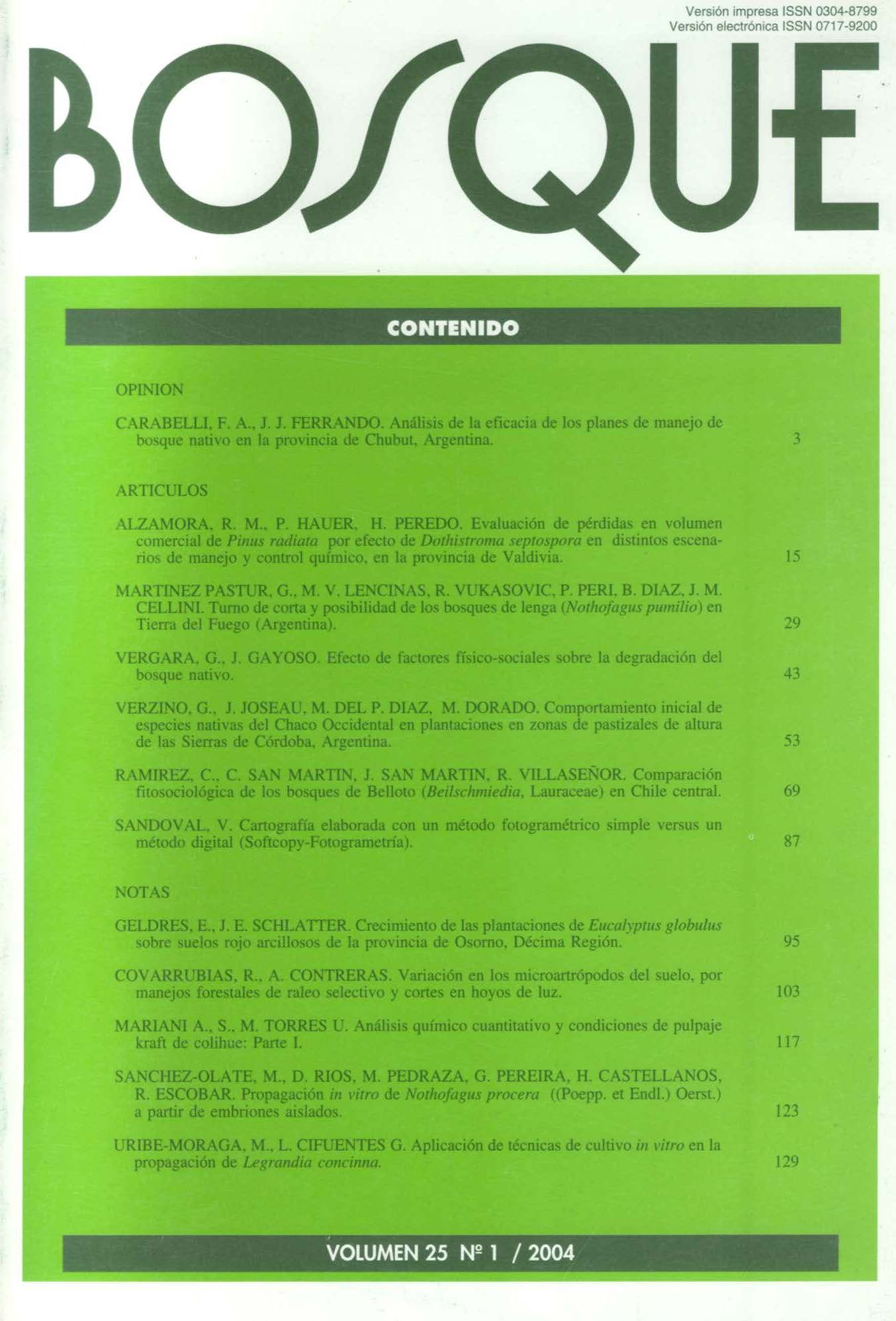Rotation length and sustainable use of lenga (Nothofagus pumilio) forests in Tierra del Fuego (Argentina)
Main Article Content
Abstract
Forest regional planning is an important tool for developing forest policies for the protection of natural forests, the use of sustainable management and multiple use principles. It is necessary to use parameters and reliable models that simulate forest production and alternative land use capabilities. The forest inventory is the primary tool, but without precise estimations of rotation length it is not possible to obtain reliable data of sustainable forest use. For these reasons, the objective was to define a simple methodology to calculate the rotation length (harvest diameter of 40 cm), by analyzing the interaction and influence of: (a) livestock browsing pressure, (b) site quality, and (c) silvicultural management. Sustainable use of Tierra del Fuego forests in Argentina was investigated using several alternatives. Some assumptions were adopted for the silvicultural system, forest management objectives, stand growths and browsing pressure. These were methodologies and biometrical models selected from the bibliography.
The methodology for rotation length estimation was defined and composed of three phases of tree growth, the establishment stage, initial growth and diameter growth. This was undertaken while considering livestock, silvicultural management and site quality. Models for rotation length estimation are presented and the effects of livestock pressure and silviculture (with or without) were analyzed in forests that varied between 94 and 200 years of age.
Sustainable forest use calculated for the productive forests varied from 913 ha/year for the current situation to 1692 ha/year with silviculture and without browsing pressure. The rotation length varied considerably according to the site quality and the type of management used for the forest. The application of a single standard rotation length in all forest situations introduced large errors, with the weighted average data obtained being higher than those suggested for lenga. Finally, according to the rotation length values and sustainable forest use of Tierra del Fuego forests, several alternatives are discussed for adjusting harvesting rates toward a sustainable management of the forest resource.

